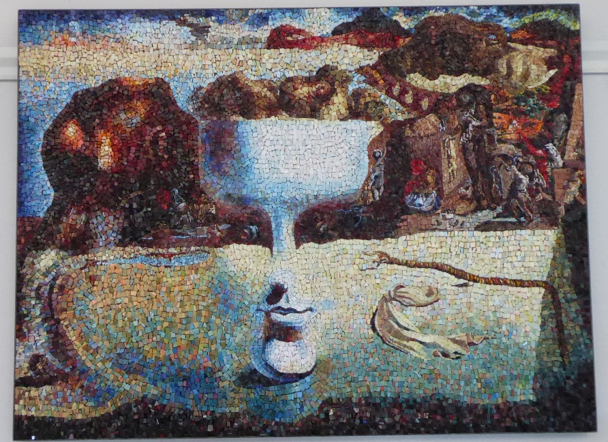
FRIULI VENEZIA GIULIA WORTH VISITING
The region where I was born a long time ago is not a known tourist destination. Yet it could be, if only people knew what it had to offer. Here is a synopsis, off the top of my head.
It has the full gamut of geographical features (spanning as it does from the Adriatic Sea to the Carnic and Julian Alps, bordering Austria to the North and Slovenia to the East). It is steeped in ancient history (Aquileia was a Roman town and in the 2nd c AD had a population of 100,000; and Cividale was the first capital of the Lombard Kingdom following the Lombards’ invasion in the 6th c.). It is dotted with medieval castles. In the medieval town of Spilimbergo it has one of the top, if not the top, school of mosaics in the world which attracts international students (click on https://scuolamosaicistifriuli.it/en/history-and-nowdays/ if interested). During the summer it holds numerous events to recall past history (rievocazioni storiche) like parades in medieval costumes and flag-throwing, including one at Spilimbergo where 600 people take part. Gastronomically, it is known world-wide for the prosciutto di San Daniele (you can stop at prosciuttifici along State Road 13 and savour freshly-sliced prosciutto) but it also has excellent cheeses like Montasio (which is used to make the regional speciality frico) and top wines, especially white wines such as Pinot Grigio, Prosecco of the Grave del Friuli and Ramandolo of Il Collio. Enjoy the country festivals (sagre di paese) where you will find live music, dancing and local food such as grilled polenta and frico. Hop on a cable car to reach the top of Monte Lussari and admire striking views of the Julian Alps. Visit the National Park of the Friulian Alps; be fascinated by the green mountain lakes like Laghi di Fusine near the Slovenian border and Lago di Barcis near Maniago. Go skiing at resorts near Tarvisio or at Piancavallo near Pordenone. Visit the Magredi in the area of Pordenone – a protected area of dry grasslands with rare flora, similar to the Russian steppe. Go canyoning in Carnia, whitewater rafting in the Forra del Cellina or take a boat trip in the Grado laguna. Join bicycle riding tours that go from the mountains to the sea, or even horse rides through the countryside. In my own hometown there is a highly-regarded Agriturismo called Gelindo dei Magredi – www.gelindo.it
I’ve focussed on the Friulian part of the FVG region, but I should mention the capital Trieste, an elegant city where coffee is king and which features the large Piazza Italia right by the Adriatic Sea. It was the major port for the Austro-Hungarian empire during its invasion.
If you are looking for something different for your next trip to Italy, I urge you to consider heading to FVG. A new guide to the region has just been published by Bradt. Here is the link: www.bradtguides.com.
Just for a laugh
Here is a practical Friulian man placing an ad (in Friulian, a language still spoken in parts of the region) on social media:
‘Coltivatôr dirèt furlàn, san, sensibil e cun bisugne di affièt, contatarés scopo di matrimoni, signorine cun trattôr. Mandait la foto dal trattôr.’
And this is what his ad says: ‘Friulian farmer, healthy, sensitive and in need of affection, wishes to contact, purpose marriage, young lady with tractor. Send photo of tractor.’
Yvette Devlin

